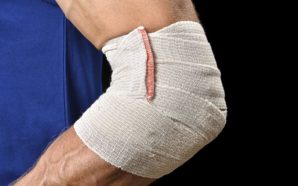Like traditional hernias, a sports hernia results from a tear or compromise in the soft tissue in the groin or lower abdomen. In medical circles, this injury is referred to as an athletic pubalgia to differentiate between the sports injuring and the protruding organs or tissue associated with a traditional hernia. A traditional abdominal hernia can but does not necessarily result from this type of injury.
The Anatomy of a Sports Hernia
Oblique muscles are most often affected by this type of injury. A sports hernias occur most frequently during sports play that involves planting the feet while twisting the torso. Hockey players, football players, wrestlers, and soccer players are among the most likely athletes to incur such an injury.
Symptoms of a Sports Hernia
A sports hernia generally results in extreme, immediate pain. This pain generally decreases as the athlete rests but often returns when the athlete resumes normal activity. Those suffering from a sports hernia often experience excruciating pain associated with twisting movements.
Unlike the common inguinal hernia, a sports hernia alone will not result in a visible bulge. However, an inguinal hernia can result from a sports hernia, especially if the injury is not properly treated. Further neglect of the injury can lead to chronic pain.
Treatment of a Sports Hernia
Even prior to diagnosis, rest and ice can help to heal a sports hernia. If no bulge is obvious, the doctor may order imaging tests in order to properly diagnose the issue. In addition to rest and ice compresses, the doctor may recommend either ibuprofen or naproxen to reduce pain and inflammation. In some cases, a cortisone injection will be administered to reduce pain levels.
After about two weeks following this injury, most athletes will be able to begin physical therapy. In most cases, following four to six weeks of physical therapy, the athlete will be able to return to full activity. In more serious cases, surgery will be required.
If surgery becomes necessary in order to repair damaged tissue, it can be done either through traditional or endoscopic methods. The athlete’s physician will assist in selecting the best option for each individual patient. Over 90 percent of athletes treated with both non-surgical treatment and surgery on a sports hernia return to full activity within a few months of the injury. Occasional additional surgery is required to eliminate pain in the inner thigh following a sports hernia.
Featured Image Source: Depositphotos/© tashatuvango








